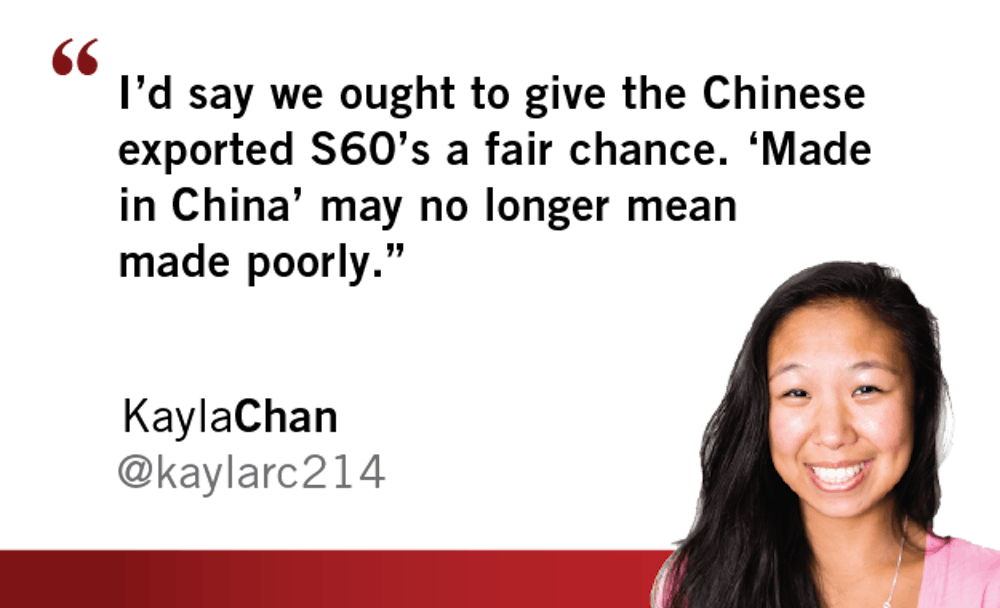"Unlike the brands 'Made in Sweden' or 'Made in Japan' in which the country of manufacturing more often has positive or neutral connotations, 'Made in China' fails to positively capture consumer awareness in the Western marketplace,” Jessica Kraft wrote in her master’s thesis for the University of Southern California. In this assertion, she’s completely right. How often does someone go into a store with the question, “Where’s the stuff made in china?” floating through their heads as they browse merchandise. That however, might be a good idea when it comes to shopping for a brand new Volvo.
The stigma of anything being “Made in China” makes it difficult for brands and companies to enter China for manufacturing. The repercussions and negative connotations corporations may face when consumers read production labels in either the U.S. or other foreign countries where products are exported discourages the continued use of current factories located in China. From lead paint jokes to terrible working condition stories, the idea often causes shudders, and a lot of manufacturing is no longer done in China as it is no longer the only source of low cost manufacturing. Although people may cringe, they begrudgingly depend on products made in China — where something is made is often a low priority in comparison to cost and quality.
In fact, Chinese manufacturing is at a low, and “most Chinese business owners realize that they need to radically change their thinking about concepts of quality and productivity” Mark McKay, associate dean of the School of Business at Canada's Trinity Western University, wrote in Forbes. This means that while products produced in China may see a slight increase in price due to higher manufacturing costs, they may also see an improvement in quality.
Half the time, consumers don’t even know where the goods that they are purchasing are being manufactured. Cars may be assembled in the U.S., but “many cars built in the U.S., for example, are assembled using parts that come from elsewhere,” USA Today reports. Most of the cars that are being driven around today should be considered internationally made cars since so many of the parts are being manufactured outside of the U.S.
Many people who purchased a Volvo in the past four years probably don’t even know that Volvo is actually a Chinese-owned company. In 2010, Geely Automobile Holdings purchased Volvo from Ford.
Volvo’s largest market is actually China, and Yahoo news reports that “the factory where the S60 is being built uses the very latest technology and operates on the strict standards laid down by Volvo."
While the new Volvo S60 models will be China’s first exported car to the U.S. and will have a nice big “Made in China” bumper sticker, U.S. consumers shouldn’t be too wary. After all, Forbes reports that the head of Volvo’s China operations ran the company's main plant in Sweden for five years.
The factory in which these cars are manufactured is also strictly managed by Volvo, a company that has turned its sales completely around, so I’d say we ought to give the Chinese-exported S60s a fair chance. “Made in China” may no longer mean made poorly.
Reach the columnist at Kayla.Chan@asu.edu or follow @KaylaRC2014 on Twitter.
Like The State Press on Facebook and follow @statepress on Twitter
Editor’s note: The opinions presented in this column are the author’s and do not imply any endorsement from The State Press or its editors.
Want to join the conversation? Send an email to opiniondesk.statepress@gmail.com. Keep letters under 300 words and be sure to include your university affiliation. Anonymity will not be granted.





